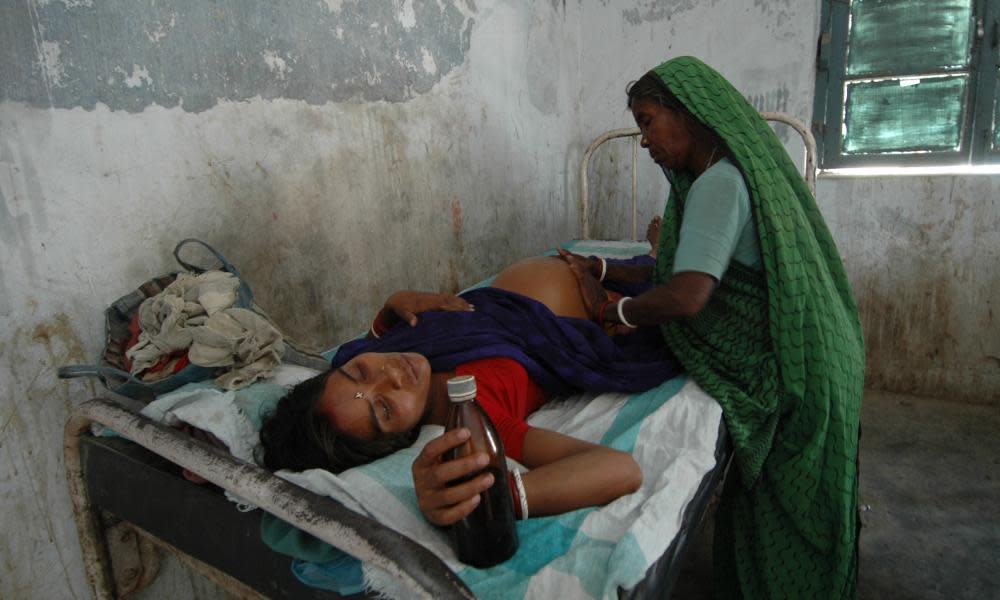'Risking lives of mothers and children': India condemned for cuts to benefits

Campaigners have warned that the lives of mothers and children are at risk after an Indian government scheme that pays women to receive maternal healthcare throughout their pregnancy was amended to apply only to first-borns.
The programme was introduced in 2010 to help stem India’s high rates of infant and maternal mortality. An estimated 38 children die for every 1,000 live births, and 55,000 women die of preventable pregnancy-related causes each year.
The scheme, which operates in 53 districts across India, originally applied to a mother’s first two children, with another programme offering an additional 1,400 rupees (£17) for every child born in a medical setting.
Last week the Indian women’s ministry announced that as part of a national expansion of the scheme, the two entitlements would be rolled together and restricted to first-born children only.
Researchers say the change will reduce the programme’s scope reach to about 43% of India’s nearly 30m annual pregnancies.
Under the scheme – the Indira Gandhi Matritva Sahyog Yojana (IGMSY) – mothers were paid up to 6,000 rupees in instalments as long as they complied with conditions such as registering their pregnancy, attending pre-natal care sessions, immunising their child and breastfeeding for at least six months.
Women also had to be 19 years or older to qualify, encouraging families to delay childbirth in a country where around half of all women are married before they reach adulthood.
The Indian prime minister, Narendra Modi, announced in December that the programme would soon be expanded across India.
Campaigners welcomed the move but questioned how the wider rollout would be funded, estimating it would cost almost the entire budget allocated to India’s ministry for women and development.
The ministry did not explain why the programme was being restricted, but Sudeshna Sengupta, a researcher, said it was clear the extra money set aside to fund the national expansion was “only adequate to cover one child”.
Poonam Muttreja, the executive director of the Population Foundation of India, a leading family planning organisation, said the programme appeared to have “shrunk even before it began its expansion at a pan-India level”.
“This is a disappointing development and does not augur well for the maternal and child health indicators of the country,” she said.
The new limits would discourage greater numbers of women from keeping in touch with health professionals during pregnancy, Muttreja added, “putting at risk the lives of both mothers and children”.
Evaluations of the programme had already been critical, finding that only 63% of the money promised between 2013 and 2016 had actually been spent. Onerous paperwork required to prove that women were complying with conditions was also slowing payments, according to a review last year.
Poor health infrastructure in many rural parts of the country – where mothers’ health is generally most at risk – was also preventing women from complying with the conditions necessary to receive the payments, data released in 2014 showed.
“Thus, women who are excluded from the IGMSY are most likely being denied benefits due to government failure rather than their own behavioural choices,” Yamini Aiyar and Avani Kapur, two fellows at the Delhi-based Centre for Policy Research, wrote in an analysis earlier this year.
Births in medical settings have continued to increase during the life of the two maternity entitlement schemes, but “this has not resulted in a significant impact on neo-natal mortality rates”, they said.
India spends less relatively little money per capita on health, allocating around 1.4% of GDP. By comparison, Sri Lanka spends 2% of its GDP on health, China spends about 3%, and Brazil, 3.8%.
“The government needs to step up funding and put its money where its mouth is,” said Muttreja.
In March this year the Indian government more than doubled the length of maternity leave available to new mothers to 26 weeks, one of the most generous entitlements in the world.
But the reach of the new leave scheme is currently limited, with nine in ten working Indian women employed in the country’s vast informal economy, where working conditions are unregulated.

 Yahoo News
Yahoo News 
